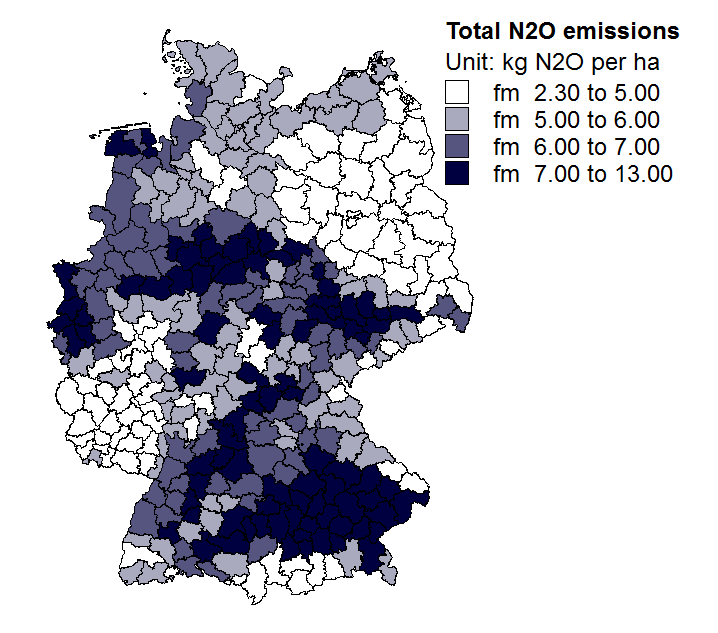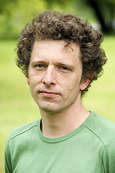
Project
Modelling of greenhouse gas emissions from land use in Germany
Modelling of greenhouse gas emissions from land use in Germany
Germany claimed to reduce its green house gas emission by 40% until 2020. Agriculture has to contribute to this ambiguous goal. Mitigation strategies for greenhouse gases from agriculture have to be developed and evaluated on the national and regional level.
Background and Objective
It is the aim of the joint research project CC-LandStraD to assess strategies of greenhouse gas mitigation and strategies of land use adaption on climate change. Strategies are evaluated with regard to their effectiveness and their implications for major land use claims and ecosystem functions. To increase practical relevance of the study stake holder accompany the process of scenario development and assessment. The modeling of land use scenarios with a joint modeling framework combining socioeconomic and biophysical models provides information necessary for the assessment process. Within the sub project “Modeling impacts of land management on greenhouse gas emissions from German agriculture and forestry” model approaches and regionalization methods are developed to quantify nitrous oxide and methane emissions from land use and live stock management and green house gas emissions from organic soils.
Approach
Within the project statistical approaches are developed which are trained on data sets of measured GHG emissions and related anthropogenic and natural factors. These models are used to regionalize GHG emissions and mitigation potentials from land use in Germany. Up-scaled GHG emissions are used to generate maps of regional specific emission factors. Those emission factor maps are used in the CC-LandStraD modeling network to calculate the mitigation effects of agricultural management strategies. Furthermore modules which estimate daily nitrous oxide emissions will be developed and coupled to process based models.
Results
Henseler M, Goetzke R, Ermisch N, Gottschalk P, Lasch-Born P, Dechow R, Kreins P, Gömann H, Gutsch M (2013) Dokumentation zur Definition und Implementierung von Modellschnittstellen zwischen interagierenden Modellen in CC-LandStraD. Integrierter 12 Report. Projektbericht.
Leppelt, T., Dechow, R., Gebbert, S., Freibauer, A., Lohila, A., Augustin, J., ... & Strömgren, M. (2014). Nitrous oxide emission hotspots from organic soils in Europe. Biogeosciences Discussions, 11(6), 9135-9182.
Thünen-Contact

Involved Thünen-Partners
Involved external Thünen-Partners
- Bundesinstitut für Bau-, Stadt- und Raumforschung (BBSR)
(Bonn, Deutschland) - Institut für ökologische Wirtschaftsforschung (IÖW)
(Berlin, Deutschland) - Potsdam-Institut für Klimafolgenforschung (PIK)
(Potsdam, Deutschland) -
Westfälische Wilhelms-Universität (WWU)
(Münster, Deutschland) - Leibniz-Zentrum für Agrarlandschaftsforschung (ZALF) e.V.
(Müncheberg, Deutschland)
Funding Body
-
Federal Ministry of Education and Research (BMBF)
(national, öffentlich)
Duration
11.2010 - 5.2015
More Information
Project funding number: 01LL0909A
Project status:
finished
Publications
- 0
Wiesmeier M, Hübner R, Dechow R, Maier H, Spörlein P, Geuß U, Hangen E, Reischl A, Schilling B, Lützow M von, Kögel-Knabner I (2014) Estimation of past and recent carbon input by crops into agricultural soils of southeast Germany. Eur J Agron 61:10-23, DOI:10.1016/j.eja.2014.08.001
- 1
Henseler M, Dechow R (2014) Simulation of regional nitrous oxide emissions from German agricultural mineral soils: A linkage between an agro-economic model and an empirical emission model. Agric Syst 124:70-82, DOI:10.1016/j.agsy.2013.10.005





